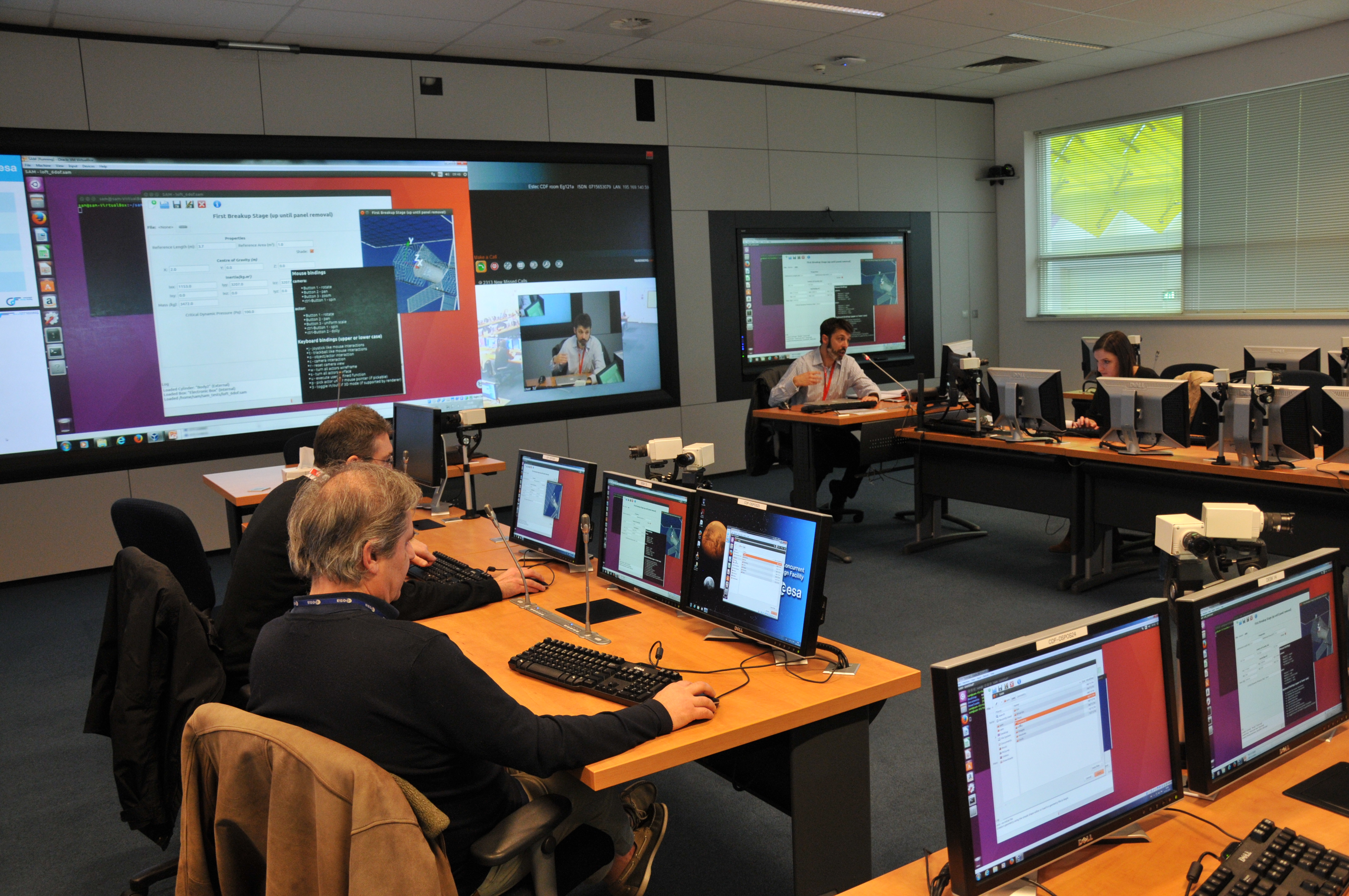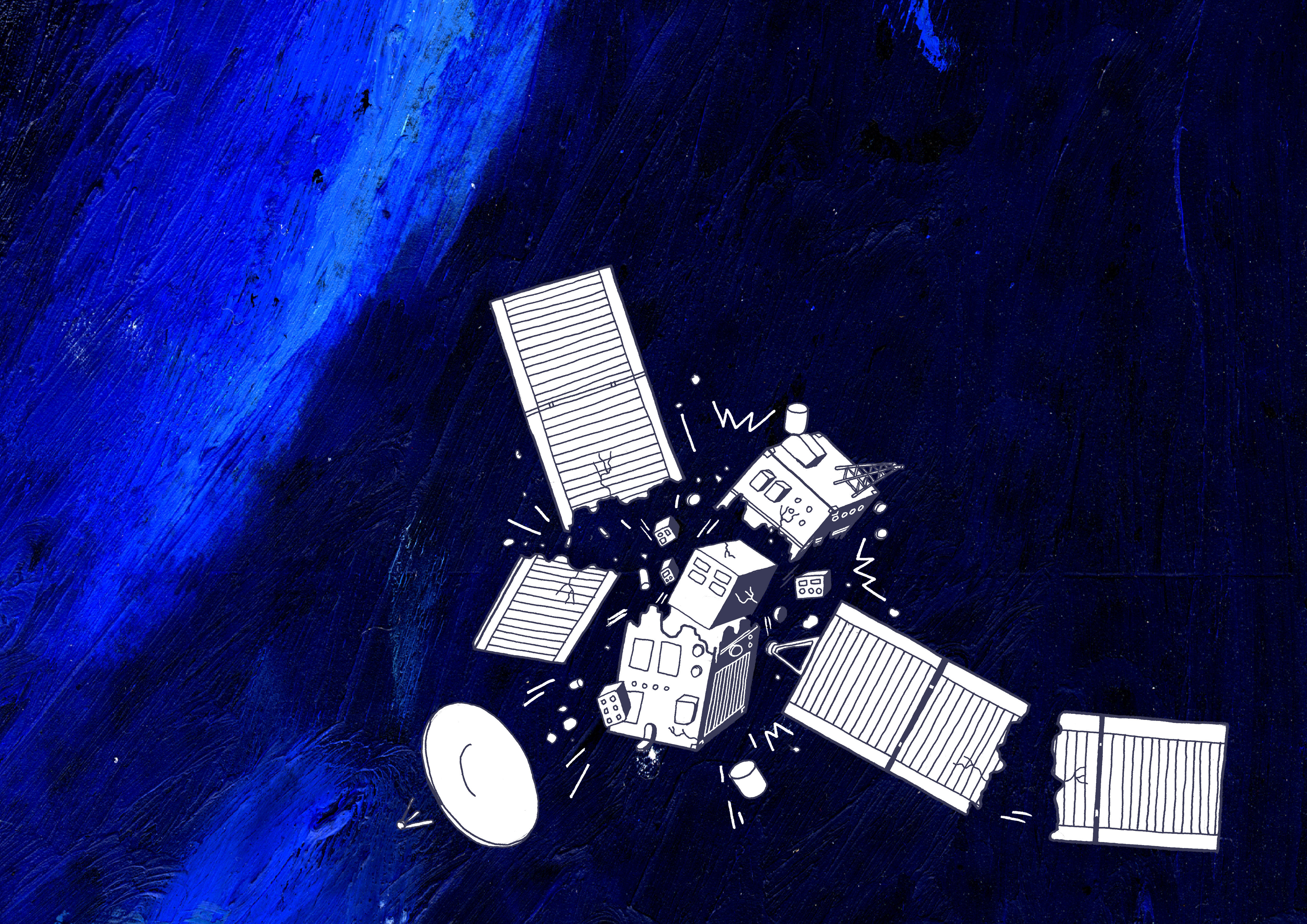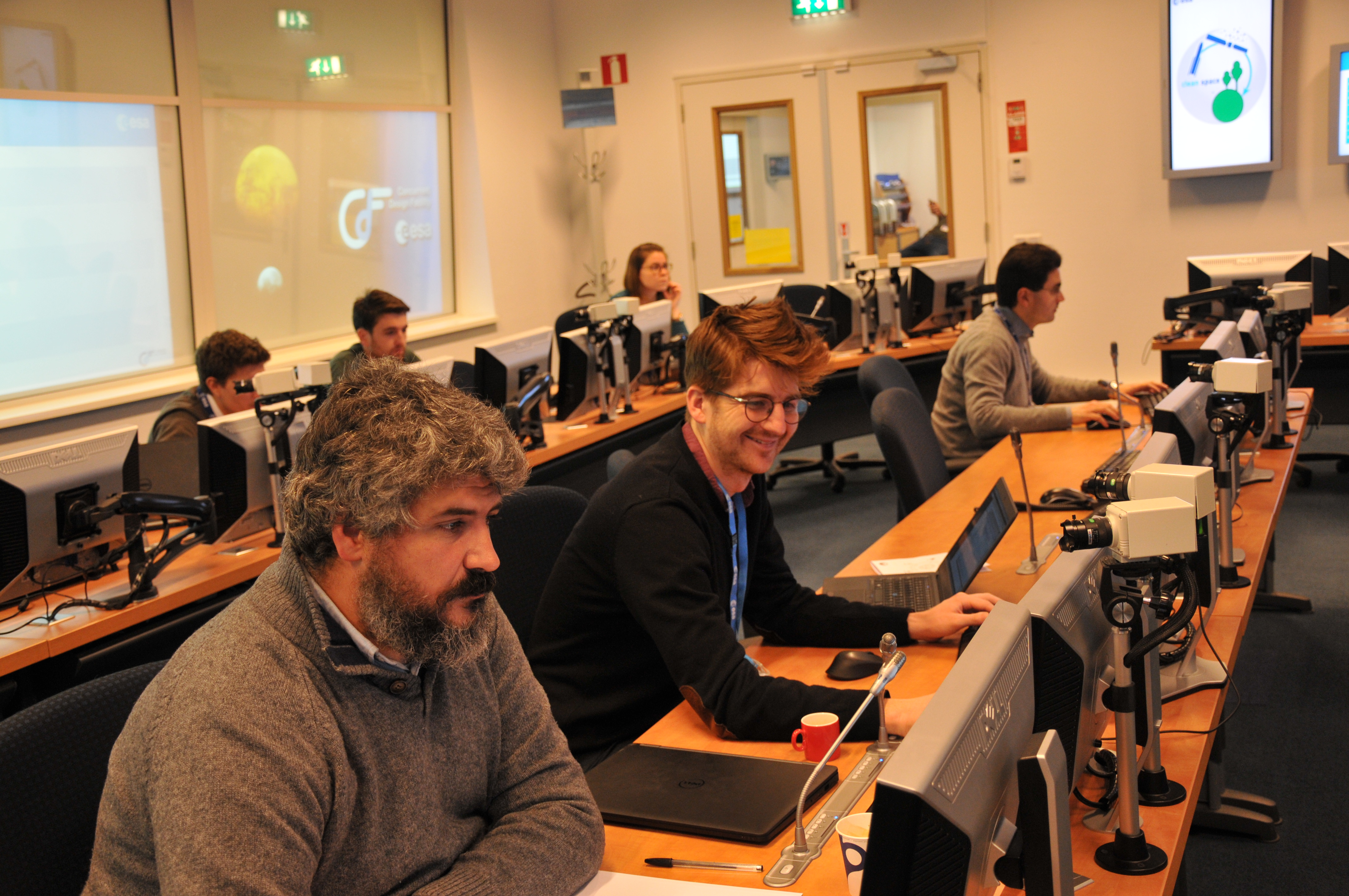Atmospheric re-entry of satellites is a destructive and difficult to predict process, as the satellite body breaks up into various segments which are scattered and subject to aerothermal heating. There are many uncertainties involved – not only in terms of fragmentation processes – but also when it comes to aerodynamics, thermal fluxes and so. All needs to be considered when it comes to assessing the resulting on-ground casualty risk.
Accordingly, a dedicated end-to-end software suite (SAM) has been developed for this purpose by Fluid Gravity Engineering Ltd and Belstead Research, under an ESA GSP contract.

Training: engineers are learning to use the end-to-end software suite in ESA’s CDF
The focus of this tool is on aerothermal predictive methodologies in the context of destructive re-entry, and the impact that simplifications have on the resultant ground casualty risk. This tool is designed to determine the effect of enhancing aerothermal descriptions of component demise and fragmentation, to have the opportunity to investigate:
- Different aeroheating models, which are implemented as component of the SAM code
- Thermal response models, which account for wall temperature effects, ablation and blowing
- Rule based spacecraft fragmentation, including a treatment of joints
- 6 Degree of Freedom (DoF) trajectory propagation both for the satellite prior to breakup and for selected fragments.
Training recently given by James Merrifield from Fluid Gravity Engineering Ltd. and James Beck from Belstead Research Ltd in ESA’s Concurrent Design Facility (CDF) was a good opportunity for the 14 experts involved to get familiar with the tool, and try its functionalities through a set of examples.

Credit: Marianne Tricot (Ecole Estienne Paris) – ESA
The session allowed the tool’s main features to be identified and the participating experts to provide feedback to the designers, highlighting the advantages, the hotspots and the possible improvements to the software.
The major features/findings are:
- The tool is easy to learn and to integrate into the CDF design model at ESA.
- It is designed for uncontrolled re-entry.
- Debris items can be set up as a shell or a homogeneous distribution of mass (in this case, the item’s volume decreases as it melts). The shape of a shell item remains unchanged as the item demises. Mass is reduced as the item demises in both instances.
- Analysis in 3-DoF and 6-DoF. Note: currently, 6-DoF analysis is utilised up until break-up; once break up occurs then debris items are analysed in 3DoF.
- Three kinds of prescribed motion for debris items analysis considering end-over-end tumbling can be considered: random tumble, side-on and end-over-end.
- All 6-DoF analysis takes the effect of angle of attack and side slip on aerodynamic coefficients into account. Shading/shielding can be considered.
- Faster than the existing SCARAB software (simplified analysis, e.g. no structure analysis, empirical fragmentation) and similar speed to DRAMA and other object oriented approaches.
- Results in tabulated format and in plots. Files containing results are saved and can be plotted using e.g. Excel.
- Comparison between SESAM, SAM and SCARAB heating models is possible.
The next upgrade of the program will be:
- Database including common parts.
- 6-DoF Debris component analysis integrated into graphical user interface.
- Possibility to export the figures for reporting.
- The level of confidence in the assessment of the casualty risk depends on the input confidence levels. This can (and ideally should) be addressed using Monte-Carlo analysis.

Training: engineers are enjoying learning to use the SAM tool in ESA’s CDF
This tool can now be ran in the CDF environment to provide destructive re-entry analysis capability at early stages of future mission design. Its usage could reduce the cost and time of re-entry analysis, which was one of the initial major goals for the development of this software.





Discussion: no comments